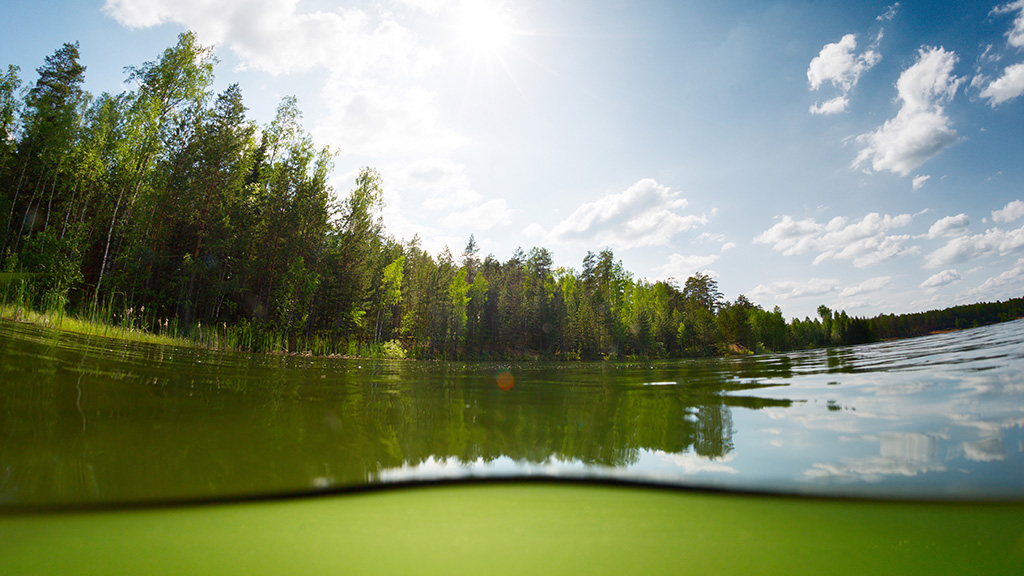Carbon Stocks in Finnish Lakes Are Growing Rapidly, but Most of the Carbon Is Still Released Back into the Atmosphere
An extensive study of 208 Finnish lakes shows that organic carbon is currently buried in the bottom sediments of lakes much faster than in previous millennia. The change is due to the increased migration of organic carbon from catchment areas to watercourses. Even though more carbon is getting permanently buried in the sediments, most of it is released back into the atmosphere as carbon dioxide and methane or carried into the sea. In other words, lakes are not simply carbon sinks, and their role in the carbon cycle is twofold.

Researchers from the Geological Survey of Finland GTK, the Finnish Environment Institute and the University of Helsinki examined which factors determine the accumulation of organic carbon in bottom sediments of boreal lakes. According to the study, the current carbon accumulation rate in lake sediments is roughly five times higher than during the Holocene epoch. Carbon migration from catchment areas to watercourses has increased significantly.
Especially carbon from forests and mires is buried relatively efficiently and may form a permanent carbon stock in lake sediments. The situation is different in agricultural areas. Nutrient loading increases the production of phytoplankton in the lake, which increases the amount of rapidly degrading carbon. Much of this carbon is buried in sediments, but it is more susceptible to degrading into greenhouse gases and does not form an equally effective permanent carbon stock.
“Changes in land use have a decisive impact on the carbon balance of lakes. Carbon-conscious land use planning and erosion control are the best ways to reduce the release of carbon and safeguard water ecosystems,” says Researcher Tuomas Junna from GTK.
Water management aimed at preventing nutrient loading and eutrophication is also beneficial for climate, as it reduces the amount of rapidly degrading organic carbon, which would otherwise be easily returned to the atmosphere.
Climate change and human activity strengthen the carbon cycle
Boreal lakes cover around 10% of Finland’s area and play an important role in the carbon cycle between soil, water and the atmosphere. The increased brownification of waters over the past decades indicates an increase in the amount of organic carbon coming from catchment areas. Climate change and human activity have a major background impact.
Although more carbon is stored in lake sediments, most of it does not remain in lakes. Finnish lakes are oversaturated with carbon dioxide, which means that carbon is continuously released back into the atmosphere in the form of gas emissions. Rising temperatures and increasing rainfall can further intensify this phenomenon.
The next step would be to extend the research to cover the entire area of Finnish lakes.
“The results of this recent, extensive study can be used when making a national estimate of the amount of carbon burial per year. This estimate would improve our understanding of the true significance of lakes in the carbon cycle and climate change mitigation,” says Junna.
It is important to determine how the quality and biological availability of organic carbon affects permanent storage and greenhouse gas emissions. This information is essential in carbon-conscious land use planning.
Further information
Tuomas Junna, Researcher
Geological Survey of Finland GTK
tuomas.junna@gtk.fi
Tel. +358 29 503 0148
The published article in Biogeochemistry: Land use as a key driver of increased organic carbon burial in boreal lakes
The study was carried out as part of the Blue Lakes project funded by the European Union. Introduction of the project on GTK’s website: Blue Lakes – Digitizing the Carbon Sink Potential of Boreal Lakes

The study was supported by the European Union — NextGenerationEU (funds administered by the Research Council of Finland project number 352811).
